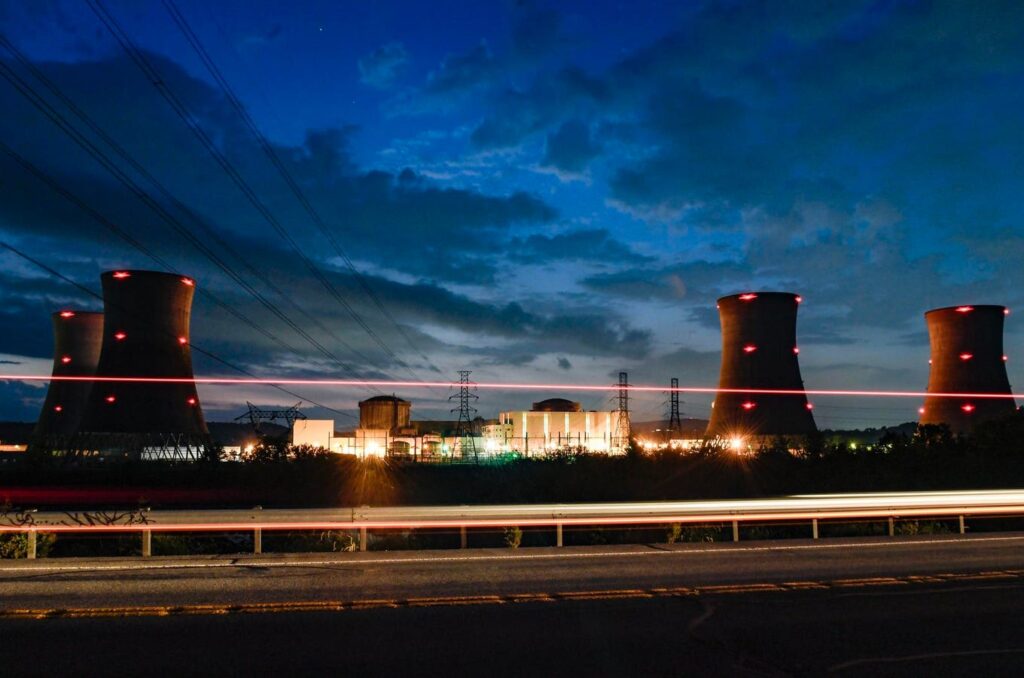The Three Mile Island Nuclear Plant is seen on September 21, 2024 from across the river in Etters, … More
“The politics of Pennsylvania are the reason why you’re always looking at Pennsylvania for every election to see how did the suburbs of Philadelphia go, whether they’ve swung or not to the left or to the right,” Pennsylvania Congresswoman Chrissy Houlahan told me in an exclusive interview.
“My district itself is 40% Democrat, 40% Republican, and 20% independent. So I’m a good kind of little Petri dish case study of the Commonwealth of Pennsylvania and the country at large,” pointing out that “we have urban, suburban, rural Democrats, Republicans, you know, independents.” Pennsylvania is the ultimate swing state, having voted for Donald Trump in 2016, for Joe Biden in 2020, and then back to Donald Trump in 2024 by less than 1%.
Graphic on support for energy in Pennsylvania, Global Strategy Group research – 2025
Houlahan is a Democrat representing Pennsylvania’s sixth district, and the first woman to do so. She’s an Air Force veteran, an engineer, an entrepreneur, an educator who worked with Teach for America and taught 11th grade science in Philadelphia. Her grandparents and parents survived the Holocaust, came to the U.S. as immigrants with nothing, and built a military family (her father and grandfather served in the Navy). She earned an engineering degree from Stanford (with an ROTC scholarship) and a Master of Science degree in Technology and policy from the Massachusetts Institute of Technology (MIT). Bemoaning that “just a couple dozen of us have STEM background or proclivity” in Congress,” at a time when every issue intersects with it, she founded and co-chairs the Women in STEM Caucus too.
Rep. Chrissy Houlahan (D-PA 06). ca. 14 November 2018. (Photo by: HUM Images/Universal Images Group … More
Reflecting the “petri dish” of her district in both political bent and priorities, Houlahan is Co-Chair of the Bipartisan Climate Solutions Caucus. With 60 members, she said it’s one of the largest bipartisan caucuses in the House. What that means for the country’s energy and climate policies circa 2025 remains to be seen, though.
Dozens of House and Senate Republicans signed letters to their leaderships earlier this year asking that the clean energy financial incentives in the Inflation Reduction Act be preserved. But then those same GOP members voted to gut those incentives in the massive Republican bill last week.
Pennsylvania is the second -largest supplier of energy to other states
Pennsylvania provides multiple energy sources and in a big way. According to the Energy Information Agency (EIA), it’s the second-largest natural gas producing state, “the third-largest coal-producing state,” and the second-largest generator of electricity from nuclear power (in 2023). “Pennsylvania is the second-largest net supplier, after Texas, of total energy to other states,” EIA reported.
Hydrogen key to domestic energy – Clean Air Task Force screenshot – May 8-2025
Two new hydrogen hubs are being developed there too, courtesy of the Inflation Reduction Act (IRA), though they are on the chopping block in the new GOP bill. The Commonwealth of Pennsylvania has secured or will benefit from over $700 million worth of climate action and clean energy investments from the IRA, according to the City of Philadelphia in January.
Pennsylvanians overwhelmingly support increasing clean energy in the state, 76% overall, including 84% of independents and 59% of Republicans.
“I just believe that we’re fundamentally a very pragmatic people who really think hard, are well educated, in different ways, to understand the complexity of all problems that we have,” including energy, “and we can find solutions that are pragmatic as well,” Houlahan insisted on Electric Ladies Podcast.
An energy crisis is an opportunity
“Our planet is under attack and we do have an energy crisis and we do need to move towards renewable and sustainable energies more rapidly than we are. And I think the people of our community, my community, recognize that.”
New research by the Environmental Voter Project found that “far more women than men are listing climate and environmental issues as their top priority in voting” – by a 62% to 37% margin. They also found that gap was “largest among young people, Black and Indigenous voters.”
Environmental Voter Project study on gender & climate vote – 2025
Read the full article here
